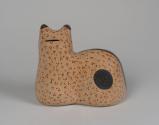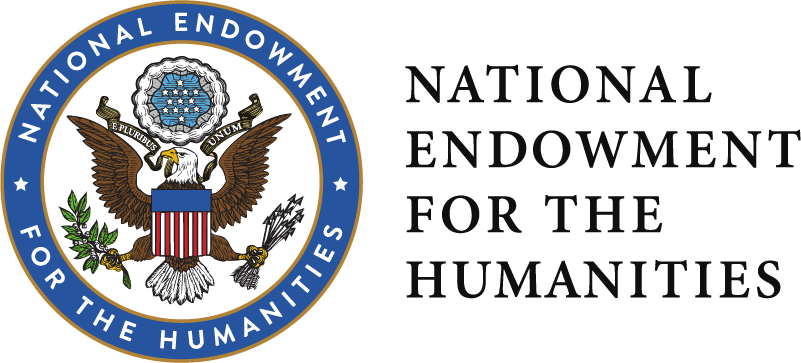Bank in the form of a Cat
Artist:
Jorge Wilmot
(Mexican, 1928 - 2012)
Place made:Tonalá, Jalisco, Mexico
Place made:Coyoacán, Mexico state, Mexico
General region:North and Central America
Date: 1958
Medium: Earthenware and paint
Dimensions:
height: 7 1/16 in. (18 cm)
width: 7 in. (17.8 cm)
depth: 4 5/16 in. (11 cm)
Credit Line: San Antonio Museum of Art, The Robert K. Winn Collection
Object number: 85.1.1811
Signed: Signed at the bottom of the vessel: signature reading “GJ,” and “1958 Coyoacán Wilmot”
Inscribed: “GJ,”
“1958 Coyoacán Wilmot”
Label Text
In the late 1950s, Jorge Wilmot relocated from Monterrey, Mexico to Tonalá and established a ceramicists’ cooperative known as “Talleres Tonalá.” With the help of several local potters, he began experimenting with new techniques and forms while producing shapes that could be hand-polished in the traditional style of Tonalá ceramics. Wilmot repeatedly used animal forms in his work, such as this sitting cat figure. Some of Wilmot’s ceramic animals were reinterpretations of traditional Tonalá iconography, and others were influenced by Asian ceramic styles and techniques. The back of the sculpture has a coin slot, suggesting that this sculpture was intended as a coin bank.
A finales de la década de 1950, Jorge Wilmot se mudó de Monterrey, México, a Tonalá y estableció allí una innovadora cooperativa de ceramistas conocida como “Talleres Tonalá”. Con la ayuda de diversos ceramistas locales, empezó a experimentar con nuevas técnicas y formas y produjo siluetas que podían pulirse a mano según el estilo tradicional de las cerámicas de Tonalá. Wilmot utilizó repetidamente formas animales en su obra, tales como esta figura de un gato sentado. Algunos de los animales de la cerámica de Wilmot eran reinterpretaciones de la iconografía tradicional de Tonalá, mientras que otros se vieron influenciados por estilos y técnicas de la cerámica asiática.La parte posterior de la escultura tiene una ranura para monedas, lo que sugiere que esta escultura fue concebida como una alcancia.
(LA, 2022)
A finales de la década de 1950, Jorge Wilmot se mudó de Monterrey, México, a Tonalá y estableció allí una innovadora cooperativa de ceramistas conocida como “Talleres Tonalá”. Con la ayuda de diversos ceramistas locales, empezó a experimentar con nuevas técnicas y formas y produjo siluetas que podían pulirse a mano según el estilo tradicional de las cerámicas de Tonalá. Wilmot utilizó repetidamente formas animales en su obra, tales como esta figura de un gato sentado. Algunos de los animales de la cerámica de Wilmot eran reinterpretaciones de la iconografía tradicional de Tonalá, mientras que otros se vieron influenciados por estilos y técnicas de la cerámica asiática.La parte posterior de la escultura tiene una ranura para monedas, lo que sugiere que esta escultura fue concebida como una alcancia.
(LA, 2022)
Not on view
In Collection(s)
The San Antonio Museum of Art is in the process of digitizing its permanent collection. This electronic record was created from historic documentation that does not necessarily reflect SAMA's complete or current knowledge about the object. Review and updating of such records is ongoing.




 This resource has been made possible in part by the National Endowment for the Humanities: Exploring the Human Endeavor.
This resource has been made possible in part by the National Endowment for the Humanities: Exploring the Human Endeavor.
